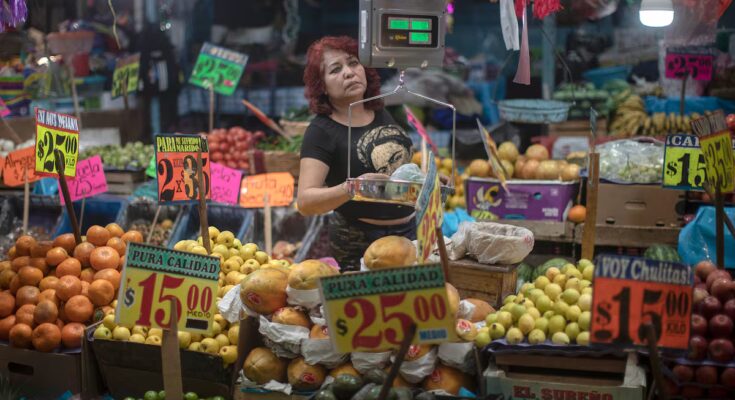The Board of Directors of the Bank of Mexico announced its latest monetary policy decision last Thursday. As expected, the downward trend in interest rates continued and there was a further reduction of a quarter of a percentage point in the Central Bank’s key rate. With this, there are now eleven consecutive interest rate cuts, and the bear cycle has already accumulated a four percentage point reduction since it began in March 2024.
In this decision there was, however, a non-negligible change regarding the future guidance of the Bank of Mexico. Now, going forward, there is no longer any talk about evaluating “further cuts” but only mentions the possibility of considering a “reference rate cut”, which implies that the Governing Council would consider, at most, only one further cut. This last cut of the cycle, before the start of a monetary pause, could take place in December 2025, during the last monetary policy decision of the year.
The pause would be justified by at least three factors: first, because inflation has not slowed at the expected pace; secondly, because the interest rate would have already reached the neutrality zone of the real interest rate ex ante (i.e. the nominal interest rate minus expected inflation for the next twelve months); and, third, because inflationary pressures are expected towards the beginning of next year. Let’s look at each of these factors separately.
Although the annual headline inflation rate (3.57% in October 2025) is within the Bank of Mexico’s variability range (i.e. 3% ± 1 percentage point), the underlying annual inflation rate has already been above the upper threshold of that range for six months and is currently at 4.28%. This is the result of the fact that both goods and services have annual inflation rates above 4% (4.12% and 4.44% respectively).
The fact that these levels of inflation are observed in a context of economic slowdown, and despite the fact that there has been some appreciation of the exchange rate, suggests that adjustments are occurring in the prices of goods and services that go beyond considerations of demand or the costs of imports. In any case, underlying inflation has not eased and general inflation has only managed to reduce thanks to the reduction in inflation rates of agricultural and energy products and in rates authorized by the government. However, as is known, the prices of these products present great volatility and their trend could reverse at any time.
As regards the second factor, it should be considered that the Bank of Mexico’s neutral real rate lies in a range from 1.8 to 3.6%. With a nominal interest rate of 7.25% and 12-month expected inflation of 3.87%, the real rate ex ante It is currently around 3.4%, i.e. already in the neutral range. If the rate fell another quarter point in December, the rate would be 3.1%. Therefore, the argument used so far by the Governing Board, according to which it would be necessary to reduce the degree of restrictiveness of monetary policy, would no longer be fully justified.
The third factor, inflationary pressures next year, is perhaps the most important of all and has most likely been underestimated by the vast majority of market participants. We remind you that, following the 2026 Economic Package, at the beginning of next year we will have new taxes on sugary drinks, on those that use artificial sweeteners and on cigarettes. Furthermore, following other decisions, a series of tariffs on several imports of intermediate goods from China will come into force at the beginning of the year and there will be a significant increase in the costs of medical and automobile insurance. The latter will be the inevitable result of an action taken by the Tax Administration Service (SAT) which, contrary to what is happening in other parts of the world, has decided to change the VAT accreditation criteria for insurers operating in Mexico.
All of these elements will combine to produce a price shock in January that, while it may be an isolated event, will undoubtedly have effects on overall and underlying inflation for at least a year. In my opinion, practically no one takes this factor into account, and inflation forecasts for next year look too favorable. In this sense, it may be worth remembering what happened in 2014, the year in which a tax on soft drinks was introduced for the first time in Mexico.
On that occasion the transfer of the tax to consumer prices was practically complete, as some academic works have shown. Before we knew this would happen, in November 2013 analysts surveyed by Banco de México predicted January 2014 headline and underlying inflation of 0.59% and 0.52%, respectively. Monthly inflation observed in January 2014 turned out to be 0.89% and 0.85%, almost 50% higher than expected.
Now, in November 2025, private analysts forecast headline inflation and core inflation for January 2026 of just 0.48% and 0.39%, respectively. This expectation is surprising because it is lower than the monthly January inflation averages observed over the past 25, 15 or 7 years. What is even more surprising is that this expectation occurs in a context where there are sure to be increases in the prices of soft drinks, cigarettes and insurance, not to mention the possible inflationary impact of tariffs on intermediate goods.
For all these reasons, we should not be surprised if inflationary pressures for 2026 turn out to be higher than expected and if, therefore, the monetary pause turns out to be longer than expected by the market and the Bank of Mexico itself.



